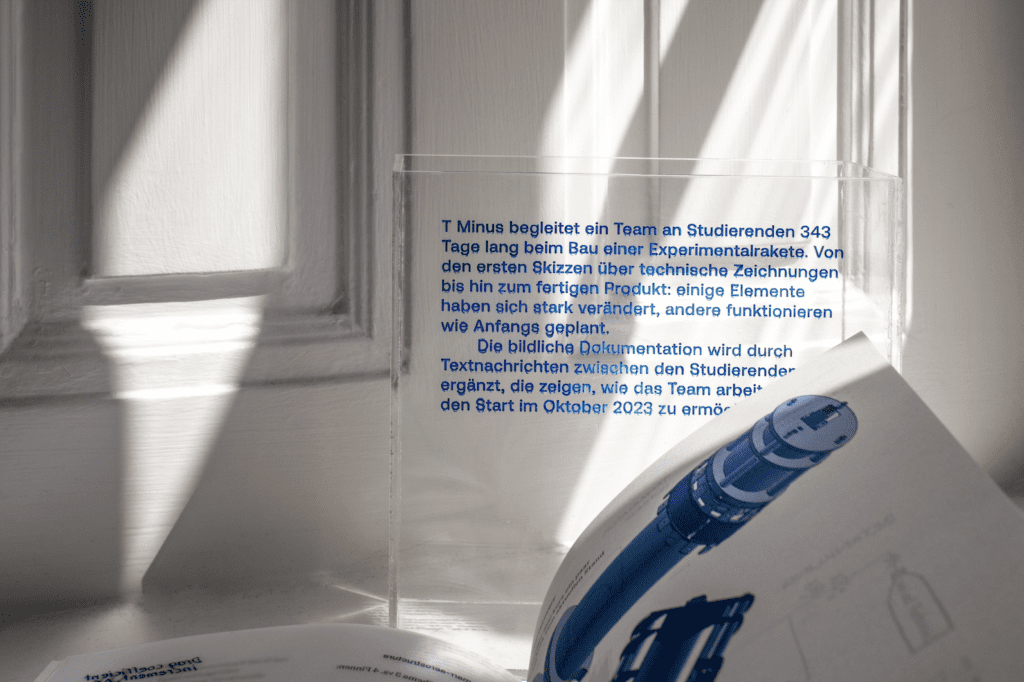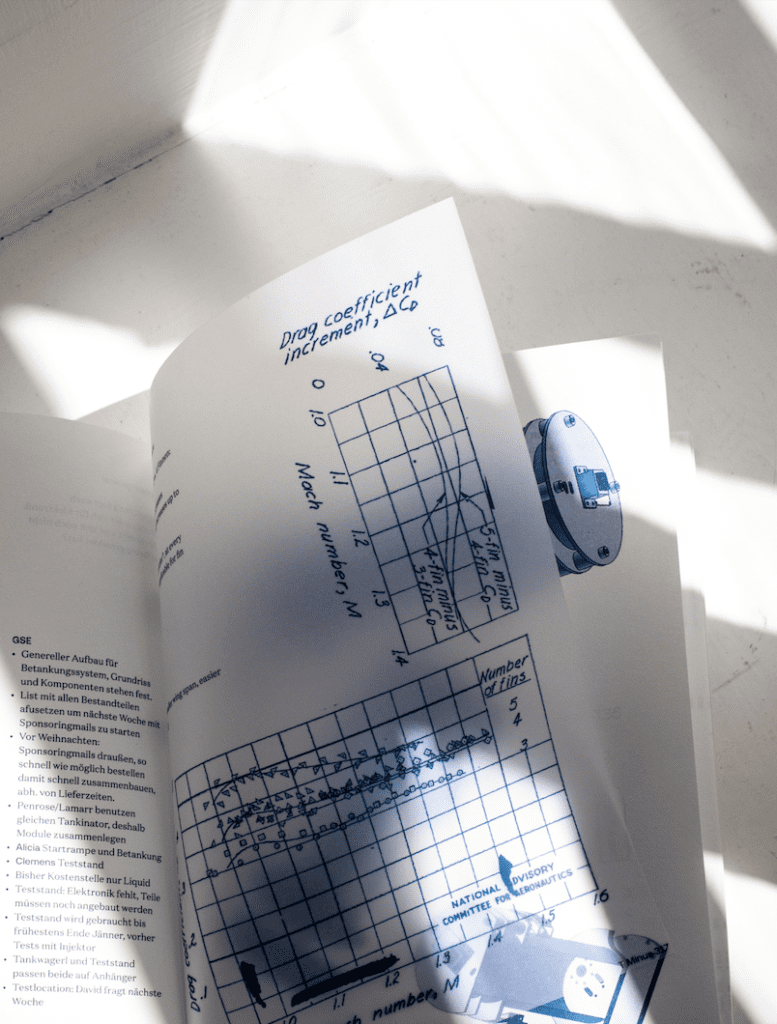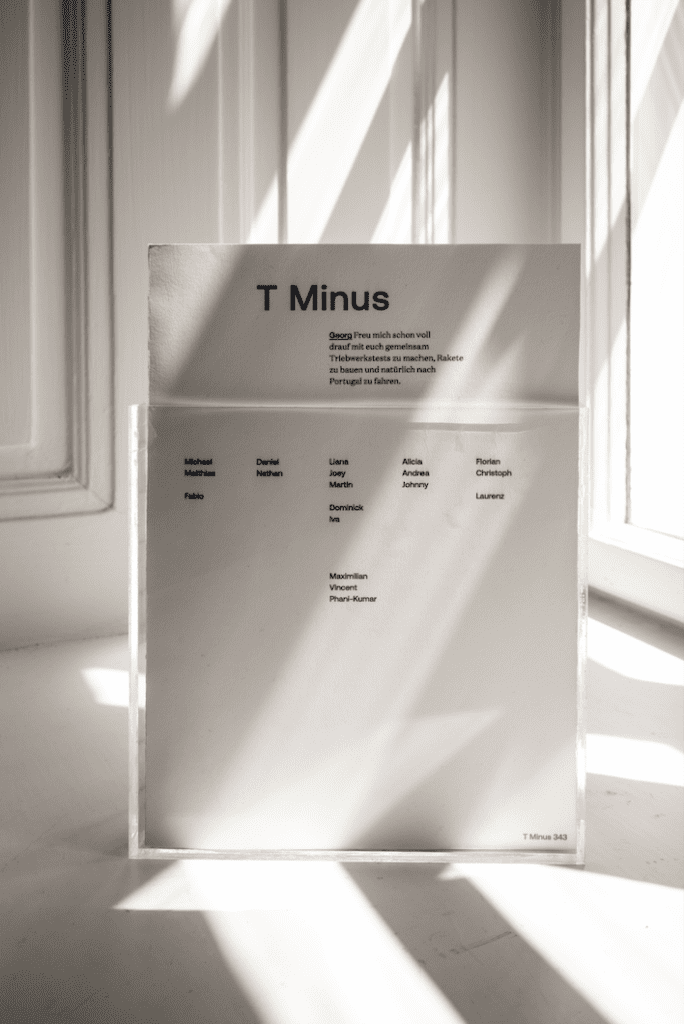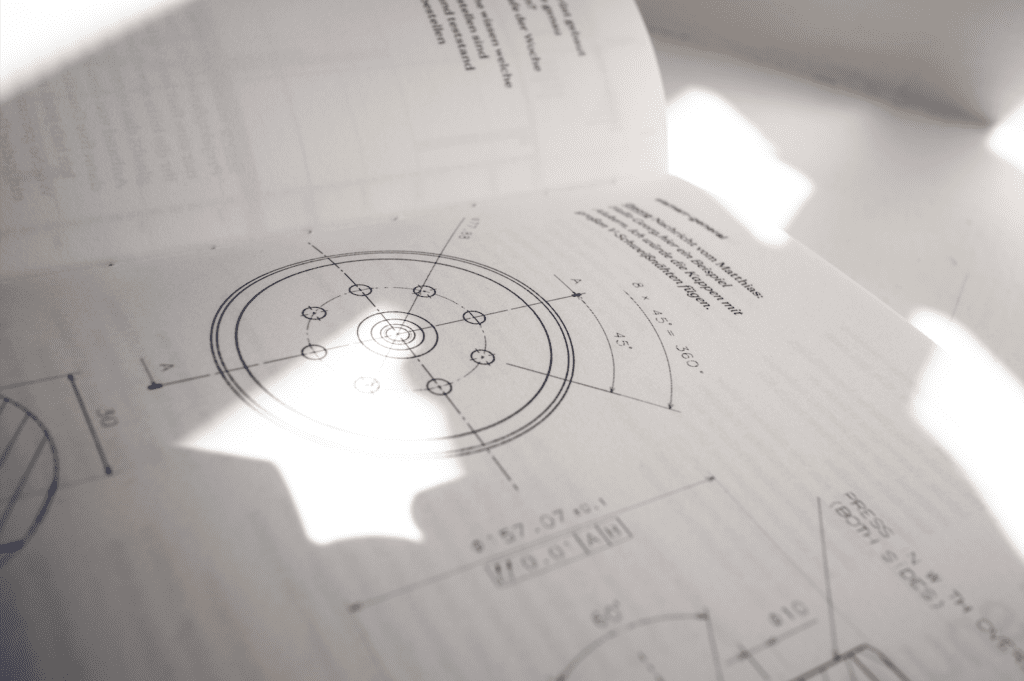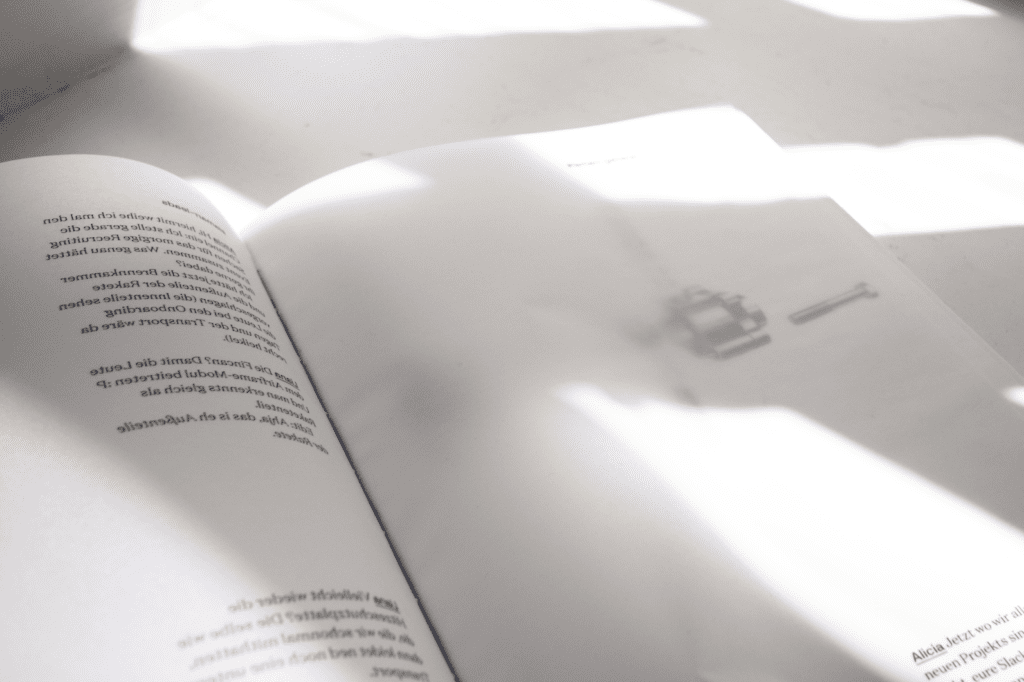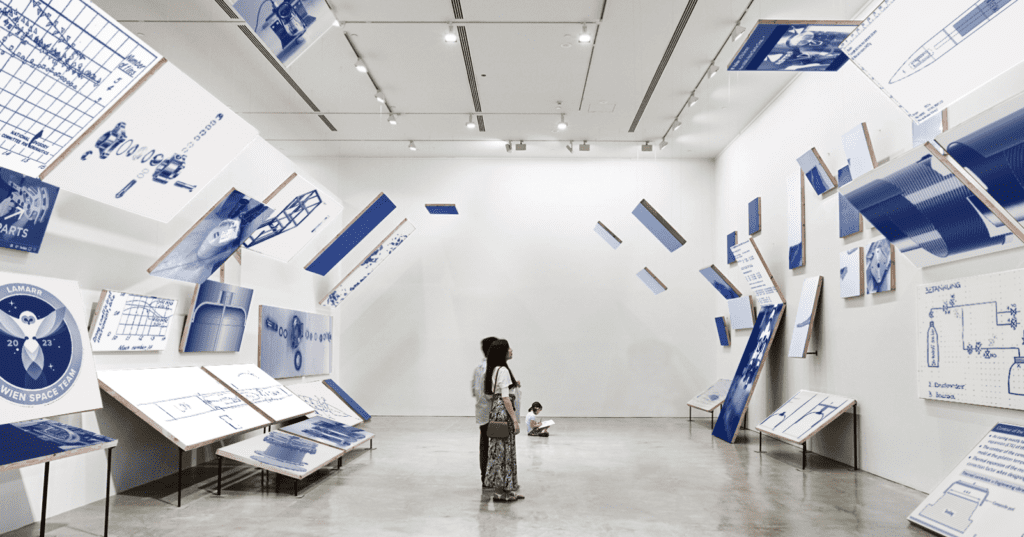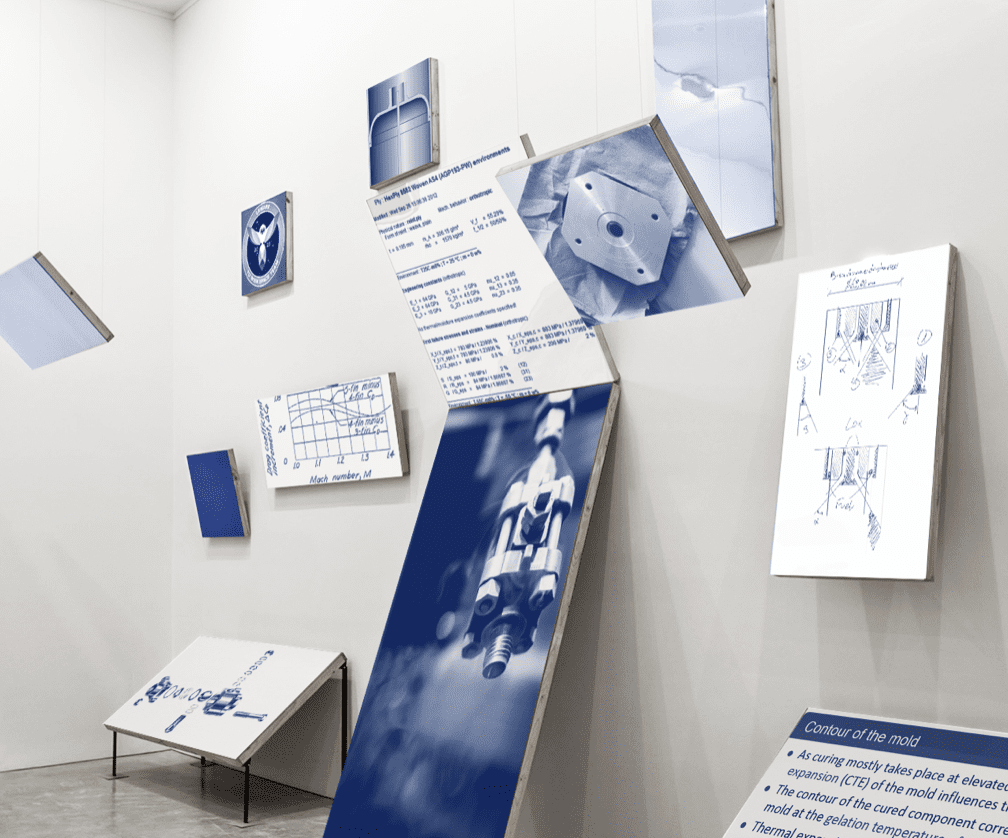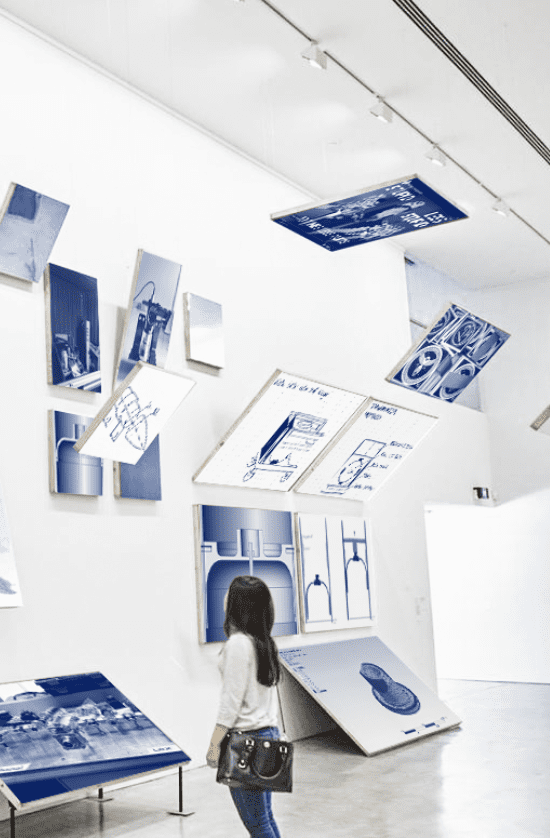T Minus
Members of the TU Wien Space Team conceptualise, design and manufacture experimental rockets, satellites and drones in their spare time. While the team enjoys a certain reputation in the scene, people outside the bubble usually do not know the organisation and its work. And if something does get published, it’s results and milestones, the way there gets lost. This was the case with μHoubolt, the team’s first liquid propellant rocket: the rocket is on display in the Technisches Museum Wien, but only the members themselves know how about the behind-the-scenes process of building it.
This is to change with the follow-up project Lamarr: A publication documenting 343 days of rocket building with all its ups and downs, thus showing the rocket’s genesis from sketch to flight. A complementary exhibition makes the team’s work and the publication accessible to a wider audience.
Usually, the heights and milestones of such rocket projects are shown: the first engine test, the launch. But that doesn’t really capture the essence of student rocketry. T Minus dedicates a sheet of paper to each day since the beginning of the project – regardless of whether a breakthrough was achieved on that day or simply nothing happened. In this way, the process is visualised through the medium and gives the viewer a new perspective on the process.
